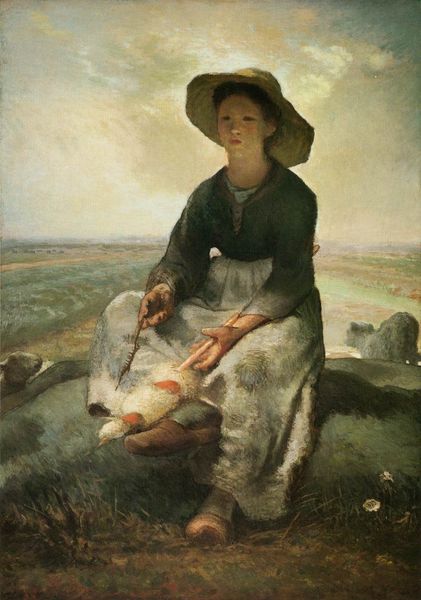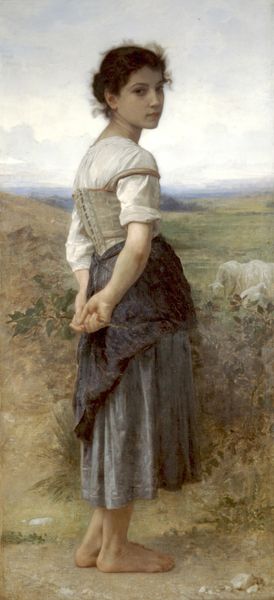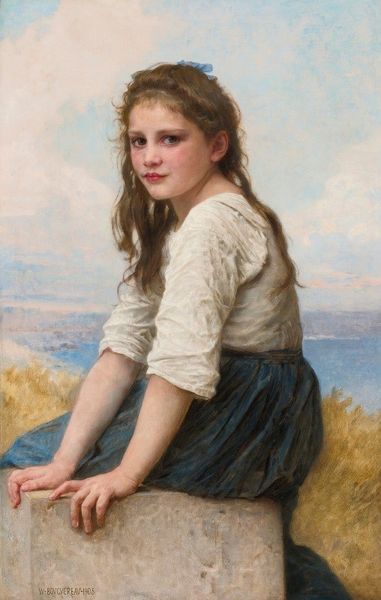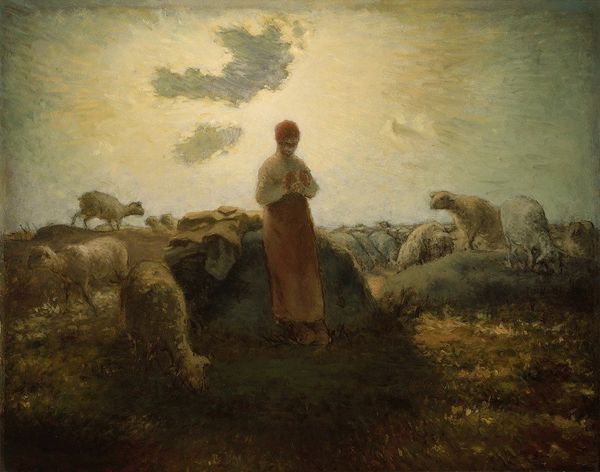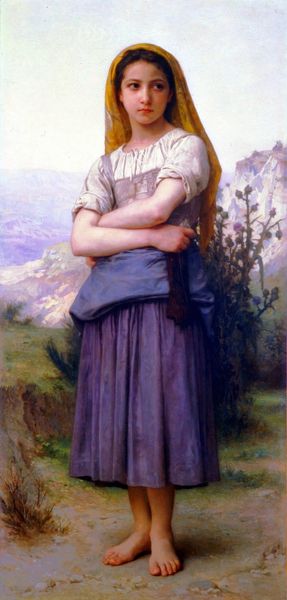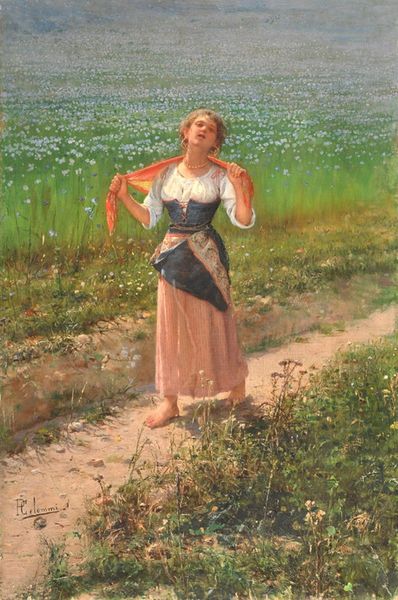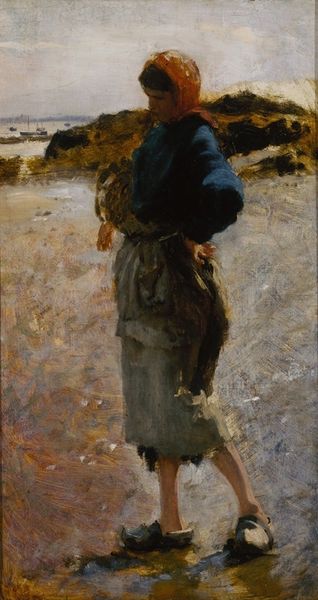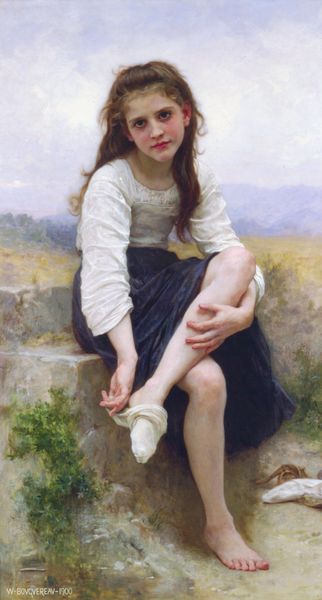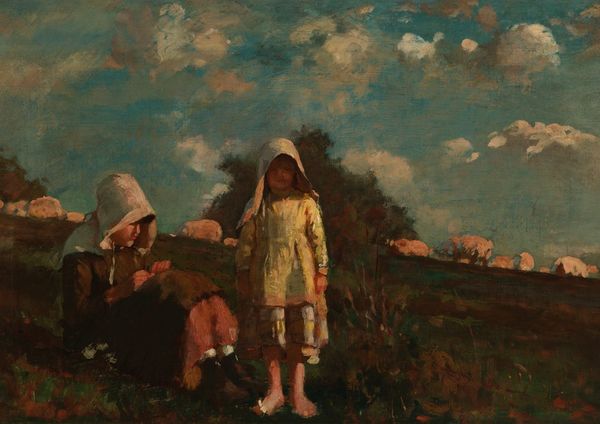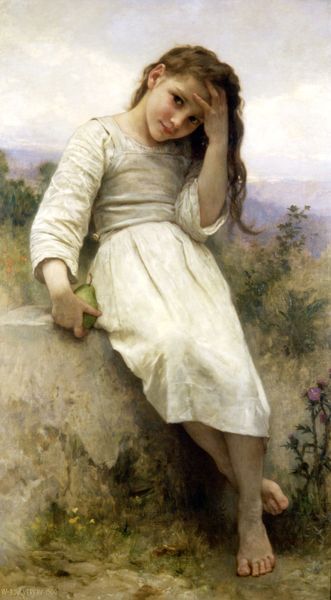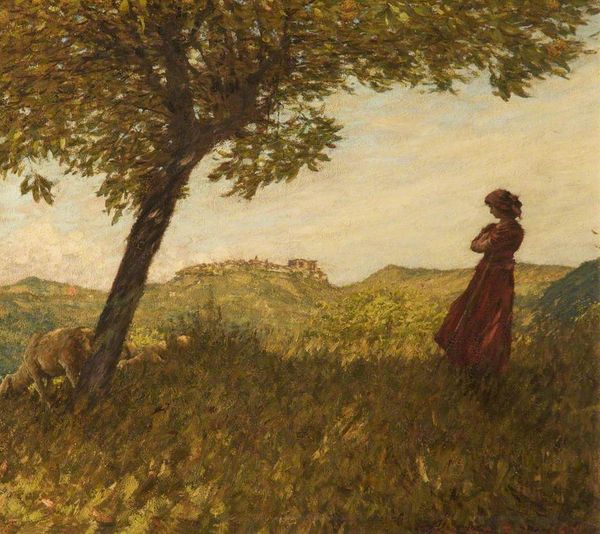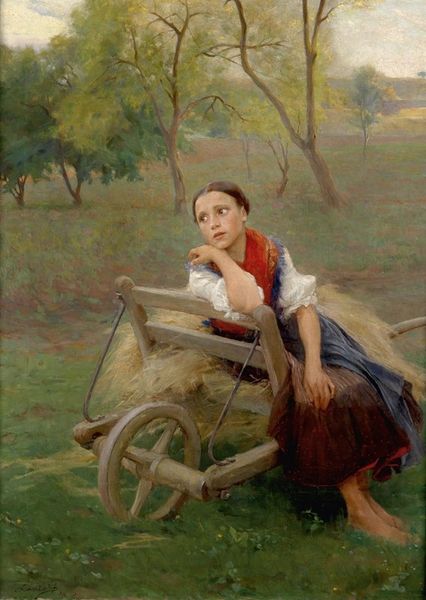
Copyright: Public domain
Editor: Here we have Eastman Johnson’s “Feeding the Lamb,” painted in 1875. It's an oil painting showing a young girl in a field, seemingly unbothered, looking towards a flock of sheep. It gives off a very pastoral and calm mood. What strikes you most about it? Curator: Well, immediately, I’m drawn to the implied labor within this seemingly simple scene. The act of "feeding" isn't just bucolic; it’s about sustenance, and that labor is gendered. Think about the broader social context. In 1875, roles were sharply defined. Is Johnson making a commentary on women's unseen work within the family unit? Does her stillness convey resignation, or quiet strength? Editor: That’s a completely different reading than I initially had. So, instead of just a girl and some sheep, you're seeing societal expectations? Curator: Precisely! And what about the lamb itself, this symbolism isn't neutral. Does it point towards religious servitude? Or maybe highlight society’s dependency on often undervalued groups. Consider also the light—it illuminates the girl, almost singling her out. Who does she represent, beyond herself? Editor: I never would have looked that deeply. It feels like I'm uncovering a whole other painting! Curator: Art reflects its time. By questioning what seems obvious, we unveil hidden layers. Does this painting reaffirm social norms or does it invite us to reconsider the contributions made by this subject, by all those that face similar expectations and biases, now and then? Editor: It really does give you a different perspective on even the most normal appearing art. Thank you. Curator: And thank you, I think thinking intersectionally enhances our appreciation, don't you agree?
Comments
No comments
Be the first to comment and join the conversation on the ultimate creative platform.
